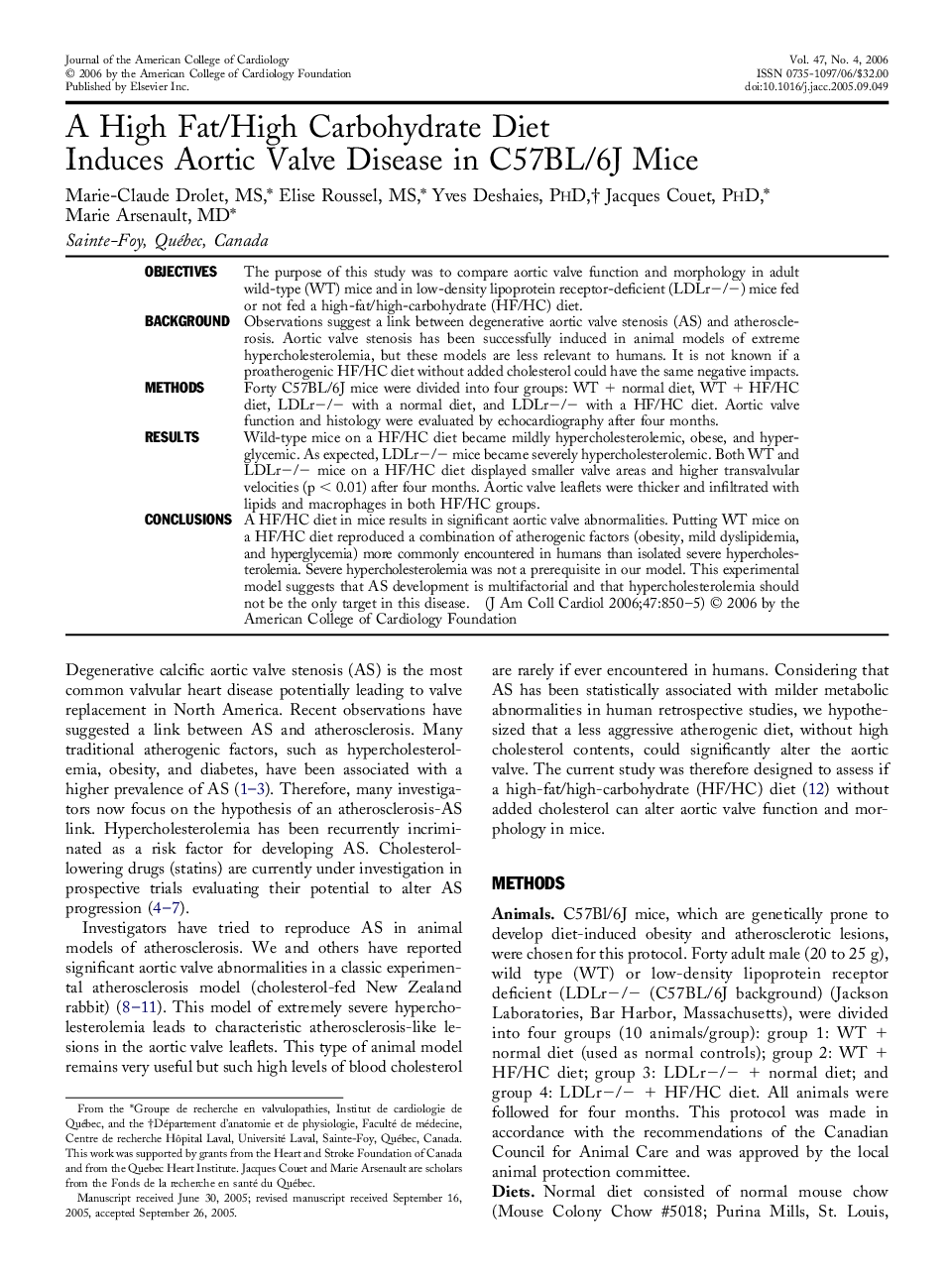| Article ID | Journal | Published Year | Pages | File Type |
|---|---|---|---|---|
| 2952439 | Journal of the American College of Cardiology | 2006 | 6 Pages |
ObjectivesThe purpose of this study was to compare aortic valve function and morphology in adult wild-type (WT) mice and in low-density lipoprotein receptor-deficient (LDLr−/−) mice fed or not fed a high-fat/high-carbohydrate (HF/HC) diet.BackgroundObservations suggest a link between degenerative aortic valve stenosis (AS) and atherosclerosis. Aortic valve stenosis has been successfully induced in animal models of extreme hypercholesterolemia, but these models are less relevant to humans. It is not known if a proatherogenic HF/HC diet without added cholesterol could have the same negative impacts.MethodsForty C57BL/6J mice were divided into four groups: WT + normal diet, WT + HF/HC diet, LDLr−/− with a normal diet, and LDLr−/− with a HF/HC diet. Aortic valve function and histology were evaluated by echocardiography after four months.ResultsWild-type mice on a HF/HC diet became mildly hypercholesterolemic, obese, and hyperglycemic. As expected, LDLr−/− mice became severely hypercholesterolemic. Both WT and LDLr−/− mice on a HF/HC diet displayed smaller valve areas and higher transvalvular velocities (p < 0.01) after four months. Aortic valve leaflets were thicker and infiltrated with lipids and macrophages in both HF/HC groups.ConclusionsA HF/HC diet in mice results in significant aortic valve abnormalities. Putting WT mice on a HF/HC diet reproduced a combination of atherogenic factors (obesity, mild dyslipidemia, and hyperglycemia) more commonly encountered in humans than isolated severe hypercholesterolemia. Severe hypercholesterolemia was not a prerequisite in our model. This experimental model suggests that AS development is multifactorial and that hypercholesterolemia should not be the only target in this disease.
